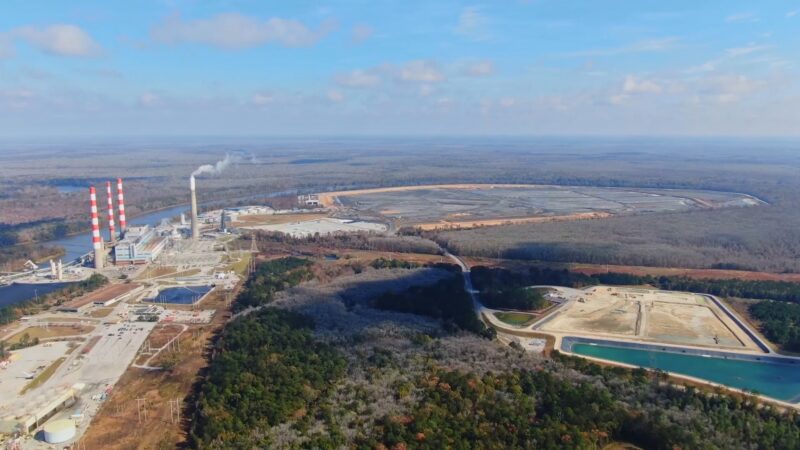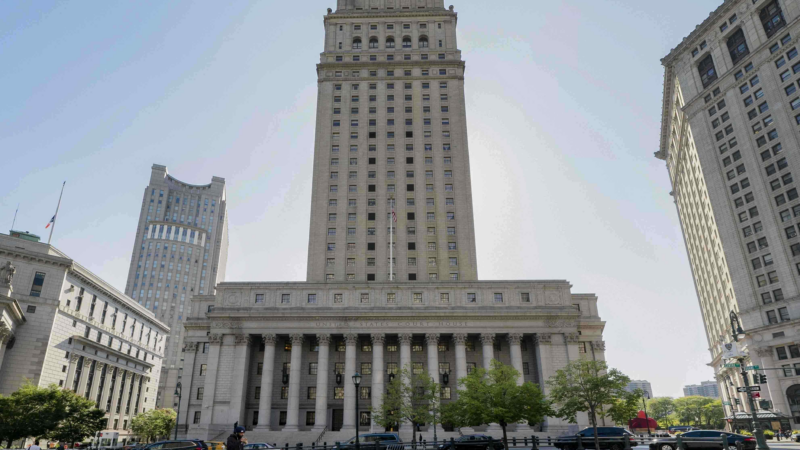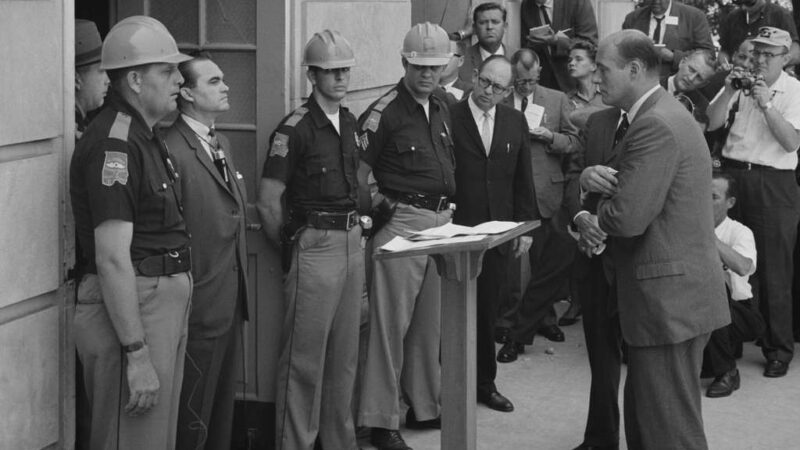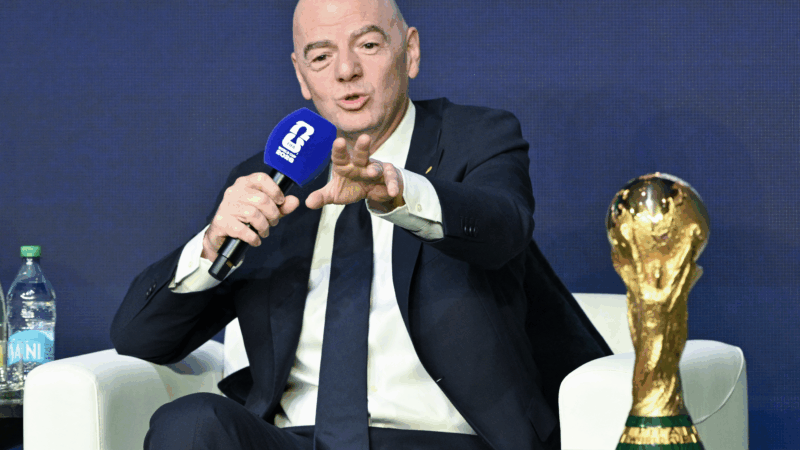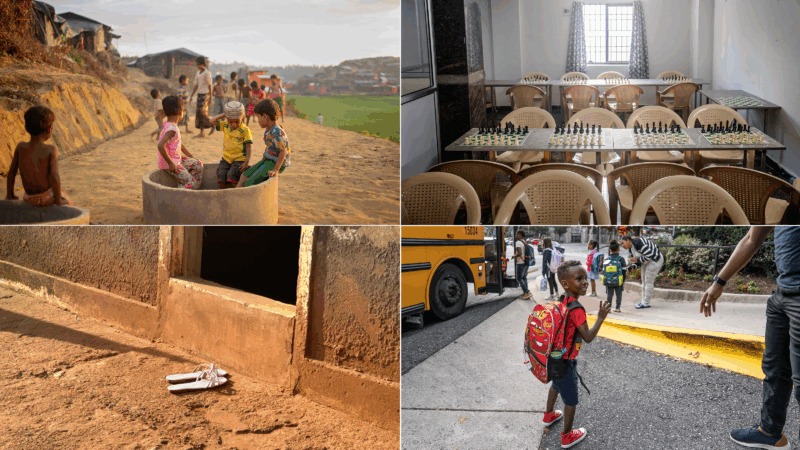A Vietnam Rescue and Reunion
Ed Carey was in a tight spot. It was April 4, 1969, and he was leading a U.S. Army Ranger team caught in a nighttime gun battle with the North Vietnamese Army. Carey and his team hid in a canal until the North Vietnamese passed. He then radioed back to the base camp.
“[Using] the famous words from any long range patrol team, ‘We’ve been compromised and we need an extraction,'” Carey said.
Back at the base camp, Mel Shinholster boarded his helicopter, part of a helicopter team sent to rescue the rangers. They were flying in complete darkness.
“There is no ambient lighting,” Shinholster said. “There are no street lights. We are running without any running lights.”
 On the ground, Carey was trying to avoid detection by the North Vietnamese Army. But he needed to signal his position to the rescue team. So Carey took a strobe light, attached it to his gun, held it up and flashed the light three times.
On the ground, Carey was trying to avoid detection by the North Vietnamese Army. But he needed to signal his position to the rescue team. So Carey took a strobe light, attached it to his gun, held it up and flashed the light three times.
Shinholster saw it.
“I’m always reminded of that phrase it’s better to light one candle than to curse the darkness,” Shinholster said. “Ed lit that candle.”
The helicopter team was able to swoop in, rescue the Army Rangers and return safely to the base camp. The soldiers went their separate ways.
A Connection Via a Newsletter
Decades later Shinholster settled in Hoover, Alabama. It was March 2005 and he was flipping through a military newsletter when a letter to the editor caught his attention. Carey wrote the letter in an effort to track down people involved in that rescue. Shinholster dismissed the note at first.
But after some persuasion by his wife, Shinholster contacted Carey. They compared their stories and, in what Shinholster describes as divine intervention, he discovered Carey was the guy with the light.
“I’ve told that story over and over about that light in that valley,” Shinholster said. “Even now the hair on arm stands up just to think about that light.”
Carey lives in Colorado and the two struck up a long distance friendship. They’ve never met in person, but that changes this weekend.
 On Sunday, Mel Shinholster will be honored at a banquet as the Great Birmingham Chapter of the Military Officers Association of America’s veteran of the year. Ed Carey will be his special guest. They’ll also take part in Monday’s National Veterans Day Parade in Birmingham, the oldest parade of its kind in the country.
On Sunday, Mel Shinholster will be honored at a banquet as the Great Birmingham Chapter of the Military Officers Association of America’s veteran of the year. Ed Carey will be his special guest. They’ll also take part in Monday’s National Veterans Day Parade in Birmingham, the oldest parade of its kind in the country.
Carey said the friendship and trip to Birmingham represents a validation of his service.
“It was good to know that somebody remembered me and I remembered them but never had the chance to walk up and put my arm around him and say thanks for doing that,” Carey said.
Shinholster too is eager to see Carey.
“I can’t wait to put my arms around that big guy myself and say welcome home,” Shinholster said.
~ Andrew Yeager, November 18 2013
How Alabama Power has left the ‘American Amazon’ at risk
As its polluting coal ash ponds remain in groundwater, Alabama Power has doubled down on fossil fuel energy investments.
Federal appeals court judge is accused of bullying her clerks
The Legal Accountability Project complaint, which has not been previously reported, states that it is based on conversations with multiple former law clerks.
How George Wallace and Bull Connor set the stage for Alabama’s sky-high electric rates
After his notorious stand in the schoolhouse door, Wallace needed a new target. He found it in Alabama Power.
FIFA president defends World Cup ticket prices, saying demand is hitting records
The FIFA President addressed outrage over ticket prices for the World Cup by pointing to record demand and reiterating that most of the proceeds will help support soccer around the world.
From chess to a medical mystery: Great global reads from 2025 you may have missed
We published hundreds of stories on global health and development each year. Some are ... alas ... a bit underappreciated by readers. We've asked our staff for their favorite overlooked posts of 2025.
The U.S. offers Ukraine a 15-year security guarantee for now, Zelenskyy says
Ukrainian President Volodymyr Zelenskyy said Monday the United States is offering his country security guarantees for a period of 15 years as part of a proposed peace plan.


